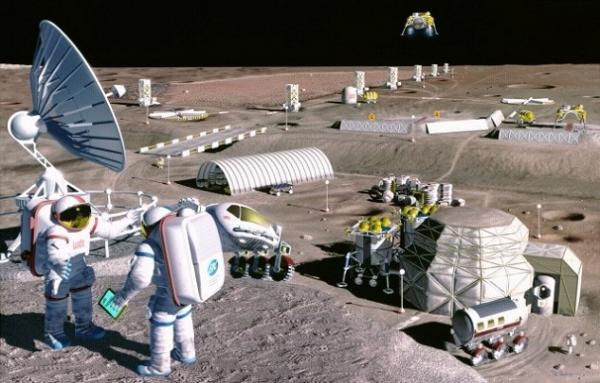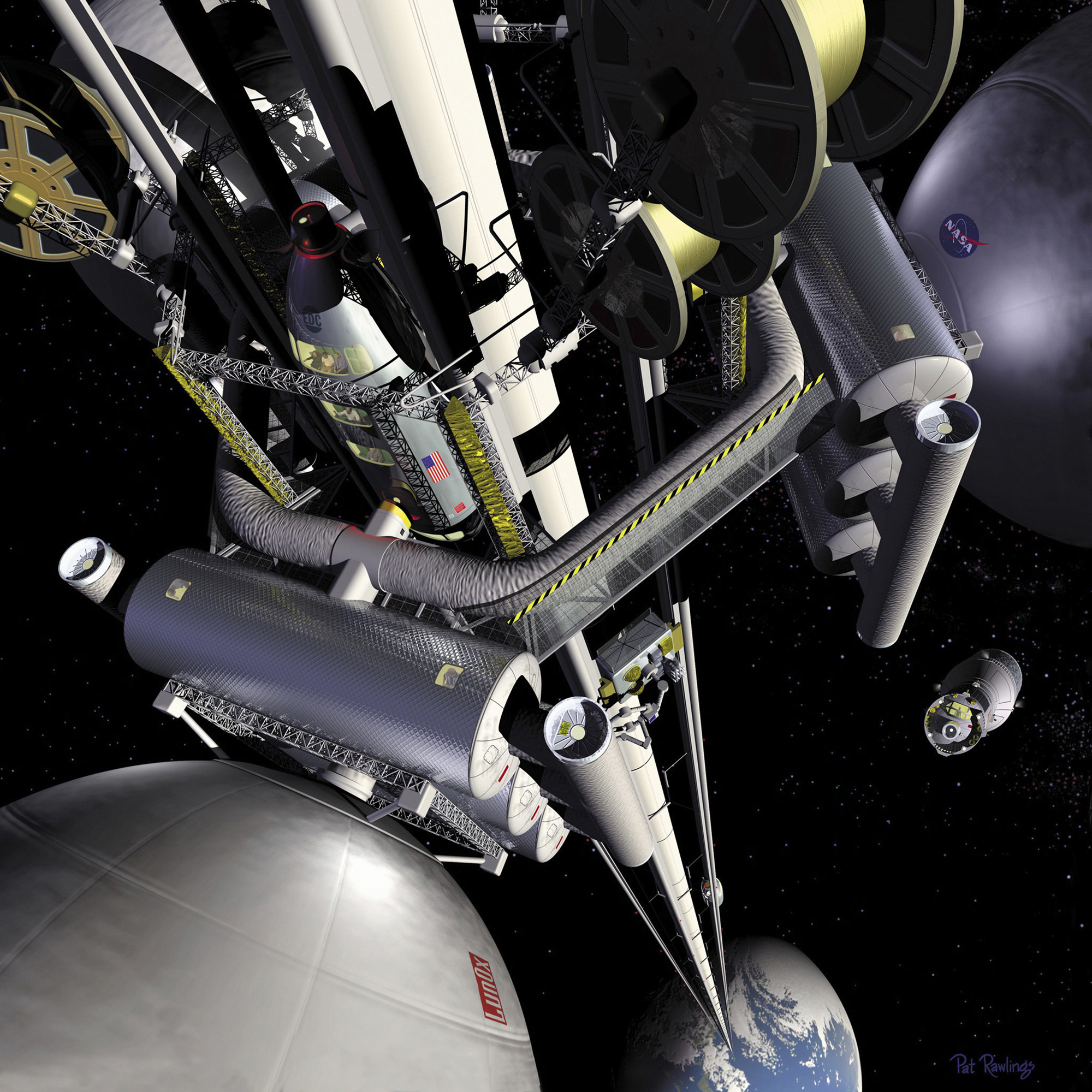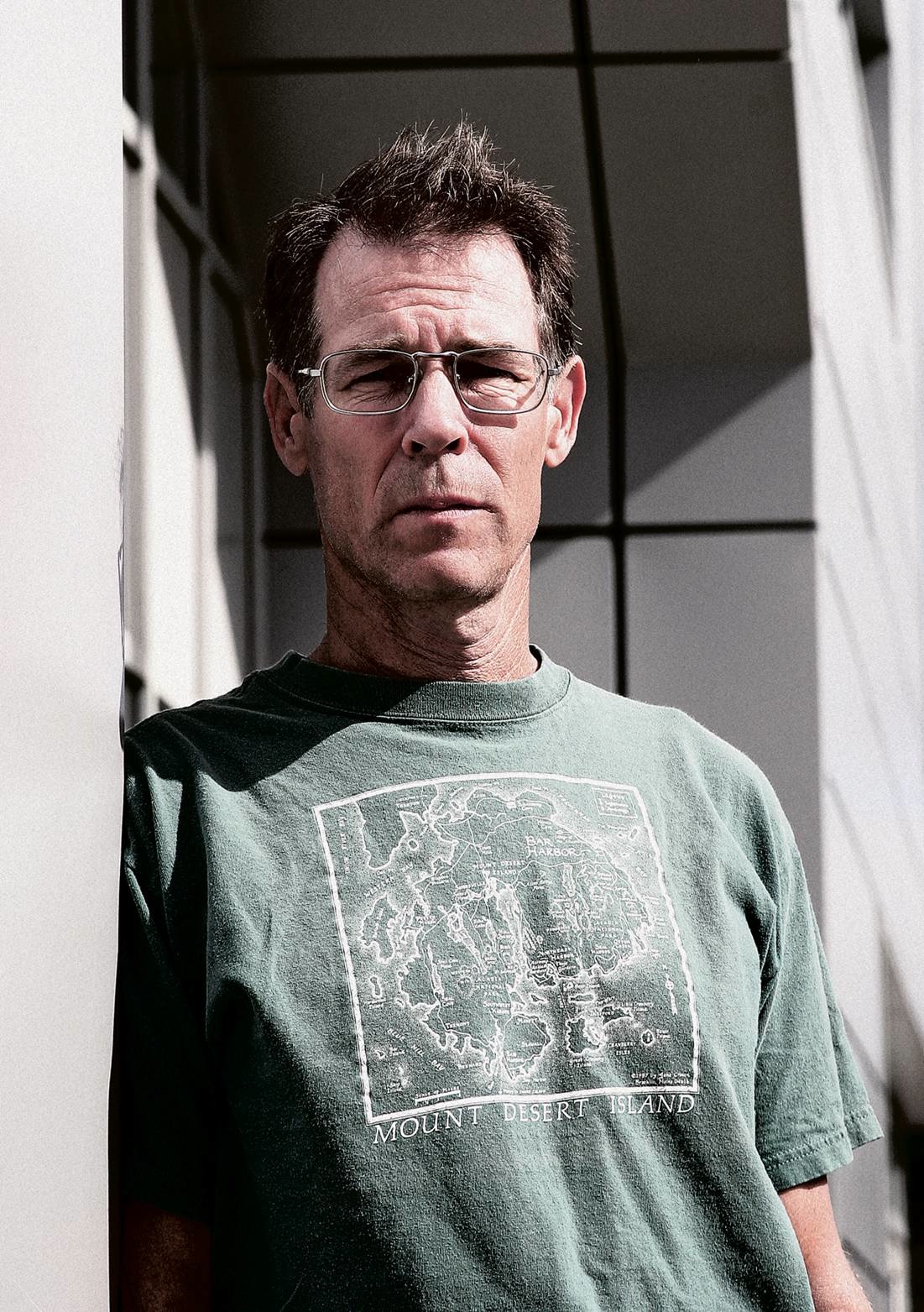Terraforming the Solar System: Q&A With Author Kim Stanley Robinson - Part 1

While Earth may be wracked by the consequences of climate change in 300 years, humanity might have moved on to occupy the planets, moons and asteroids of the solar system. That's the vision presented in a new novel by science fiction heavyweight Kim Stanley Robinson called "2312," out May 22 from Orbit Books.
In Robinson's imagining, people live under a giant sunshield on Venus and inside a rolling city that traverses Mercury. They take space elevators up and down to Earth, where huge populations of humans still live, though most of the large mammals have died out.
SPACE.com recently caught up with Robinson to discuss the ins and outs of terraforming, predicting the future, and why we need space elevators. Here's Part 1 of our two-part interview.
SPACE.com: How did you come up with the terraforming scenarios you describe?
Kim Stanley Robinson: There is a terraforming literature out there now. Basically, my attitude has been that everything that has been suggested to be tried that is not physically impossible is likely to be tried eventually if you give it a 300-year timeline like I have, and a very robust movement out into space.
To me it all follows from the space elevators — that's a crucial component, that we could actually be able to get to space cheaply and effectively, because we're at the bottom of a gravity well. If you have space elevators, if you have self-replicating machinery — and those are two giant ifs — but at that point a whole suite of methods are suddenly available. [Poll: Where Should Humans Build the 1st Space Colony?]

SPACE.com: In imagining this future, how did you pick the date 2312? Why not 2212 or 2812?
Get the Space.com Newsletter
Breaking space news, the latest updates on rocket launches, skywatching events and more!
Robinson: The title was my editor's suggestion, and I thought it was a good one — to pick a date and put it in a round number from now so people could think about it. And I thought 300 years was about right, in that it's far enough out there that it utterly taxes the imagination, and on the other hand it's far enough out that it gives you time to think about the differences between now and 1712, if you run it in the other direction.
SPACE.com: In your vision, almost every body in the solar system is useful and can be terraformed. Do you think that's true, and all the asteroids and planets and moons each have potential to house humans if treated right? [How to Terraform Your Own Asteroid]

Robinson: It's a good question because of the gravity problem. We've lived in microgravity, and we know that's a problem, being on spaceships. But we haven’t lived on low-gravity planets like the moon. With all these big honking Jovian moons, with so much land, so much water, everything's looking very promising except for what it's going to be like for humans to live in that light gravity the whole time.
That’s why I came up with the idea that you might have to come back to Earth every once in a while for a sabbatical, if you did live in space. That there might be health impacts of living in these light gravities that we just don’t know about right now.
With all those landscapes, especially Mars, and all the big solid-body moons — you have to imagine various kinds of shielding to deal with cosmic ray impacts, but beyond that, you've got water, you’ve got land; it looks very promising. And the inside of the asteroids helps with that, because you can spin them up into interior artificial gravity, as I postulate. And you've also got tremendous radiation protection by the walls of the asteroid.
It struck me that there are so many asteroids that if you had a technology and a culture that was interested in occupying them, then you could quickly get into a renaissance Italy city-state sort of situation, or a Wild West. It could be very troublesome and complicated politically.
SPACE.com: In the book, you postulate asteroid worlds built to reproduce Caribbean islands, or medieval Italy, or entire worlds in the dark. Of all these places you've imagined, which one would you most want to live on?
Robinson: It's an easy question to answer, because I put in Sequoia Kings Canyon, the part of the California Sierra Nevada that I love the most.
I mean, I'd rather be in the real Sequoia Kings Canyon, but with the kind of climate change that I postulate, the Sierra Nevada is going to suffer badly. It could be baked and turn into one of these Nevada dried out ranges, which would be super sad. But if I had to choose which asteroid to live on, that would be the one, because it would please me greatly to be stuck permanently in my favorite spot on Earth.

SPACE.com: So you would choose something that's familiar, rather than these fantastical combinations you've theorized?
Robinson: It's just because I know what I like and I love it there. I spend as much time there as I can.
SPACE.com: So what do you think needs to be done right now to get us on a path where we will have colonized the solar system by 2312?
Robinson: Well, a decent launch vehicle for the United States to low-Earth orbit. I think we should go back to the moon and set up a colony down at the poles where there's water, or on the backside where the viewing would be good. I think we should go to Mars, I think we should go to the asteroids. I think there should be a robust robotic and human program. I think the Pentagon budget and DARPA, they ought to be folded in with NASA's. When you think of the Pentagon's budget, being $700 billion a year, and NASA's budget being $18 billion a year, it's just all wrong to me.
Many people at NASA talk about enabling the privatization of space, and I would like to keep it public — something that every citizen feels like they're involved in, that space is a public utility rather than a private playground.
But on the other hand, I'm willing to concede that there should be the ability to have private people in space also, and not just billionaires doing a kind of bungee jumping in reverse — I just think that's a trivialization of space. But there's room for everything.
And then the space elevators. That and solar power from space beamed down to Earth. In engineering terms, they are right at the edge of what we can do or beyond it. But that would be where the push has to come for right now.
To read more about Robinson's vision for the future, including political systems and the redefinition of gender, read Part 2 of our interview here.
You can follow SPACE.com assistant managing editor Clara Moskowitz on Twitter @ClaraMoskowitz. Follow SPACE.com for the latest in space science and exploration news on Twitter @Spacedotcom and on Facebook.
Join our Space Forums to keep talking space on the latest missions, night sky and more! And if you have a news tip, correction or comment, let us know at: community@space.com.

Clara Moskowitz is a science and space writer who joined the Space.com team in 2008 and served as Assistant Managing Editor from 2011 to 2013. Clara has a bachelor's degree in astronomy and physics from Wesleyan University, and a graduate certificate in science writing from the University of California, Santa Cruz. She covers everything from astronomy to human spaceflight and once aced a NASTAR suborbital spaceflight training program for space missions. Clara is currently Associate Editor of Scientific American. To see her latest project is, follow Clara on Twitter.









